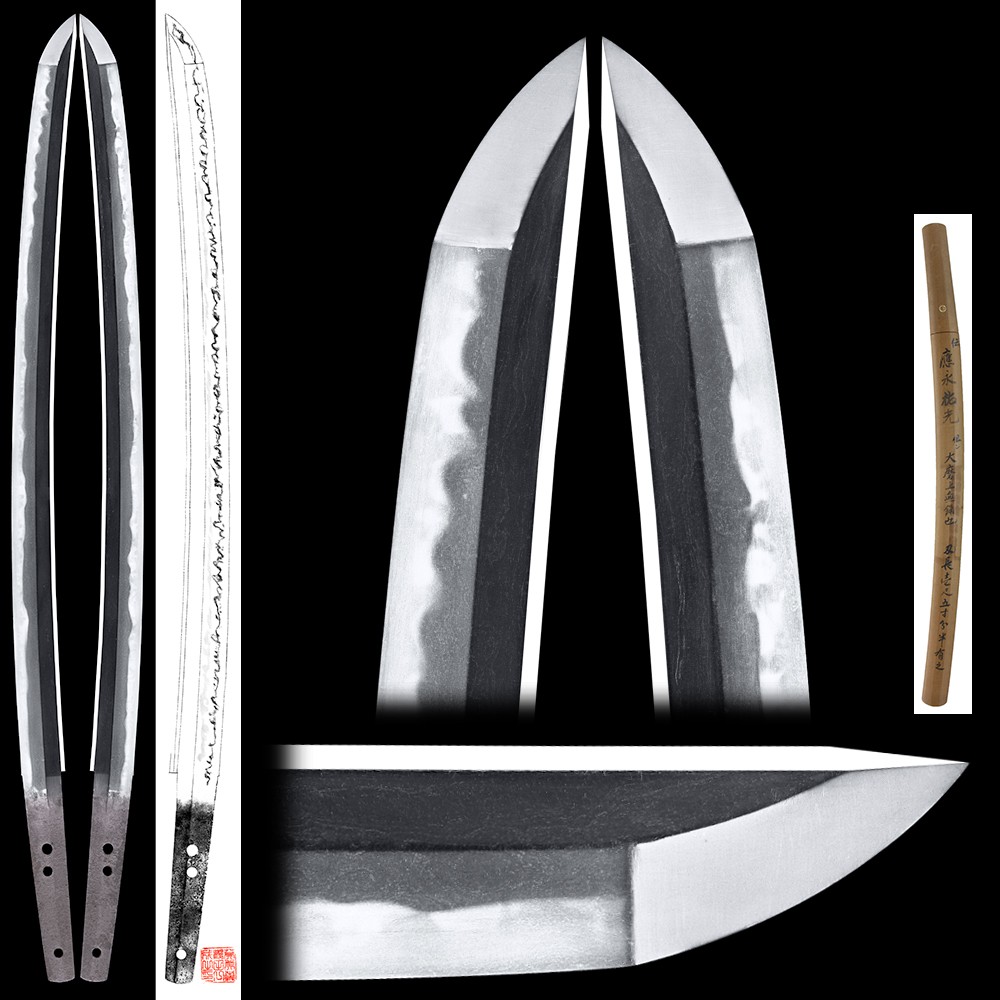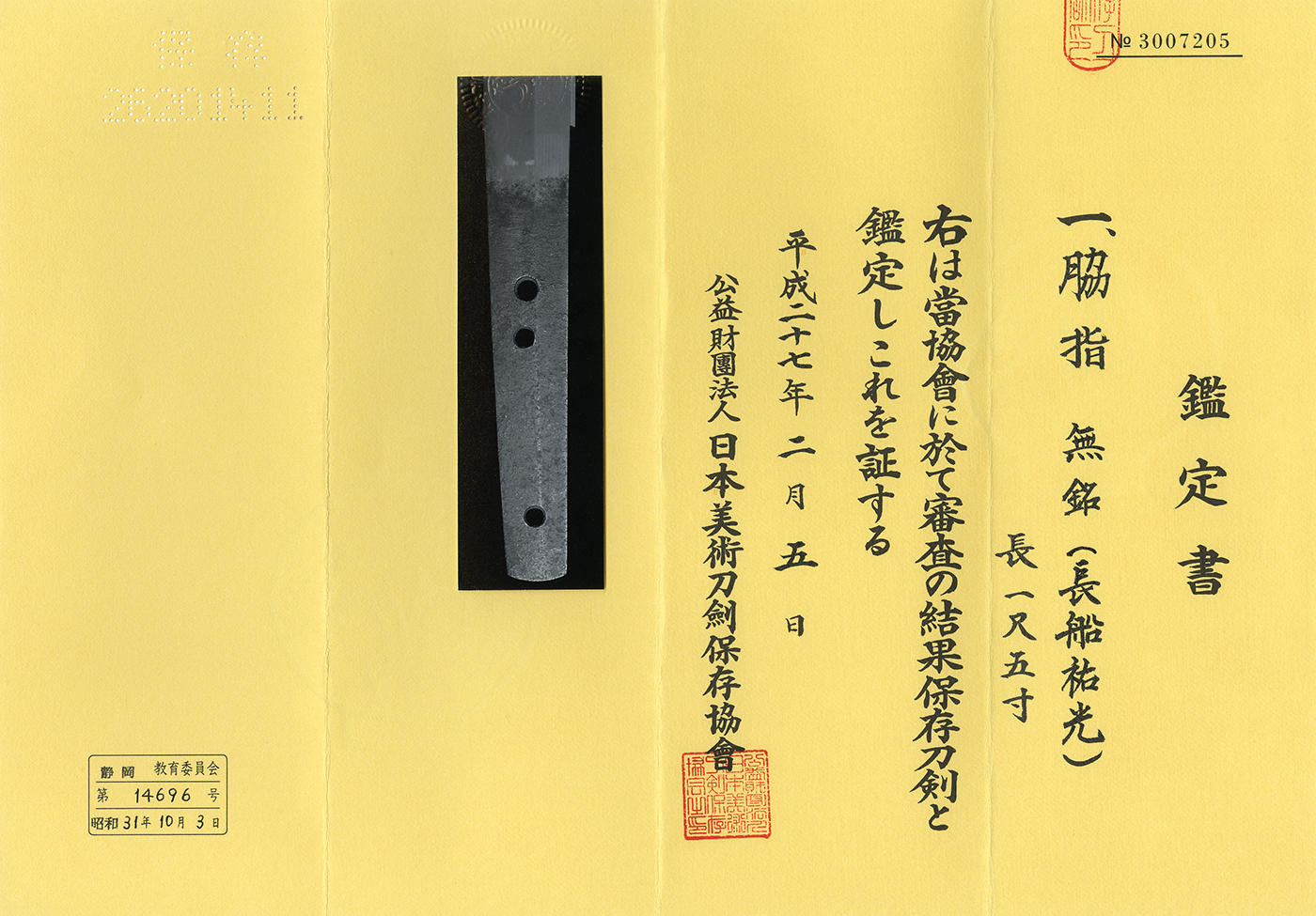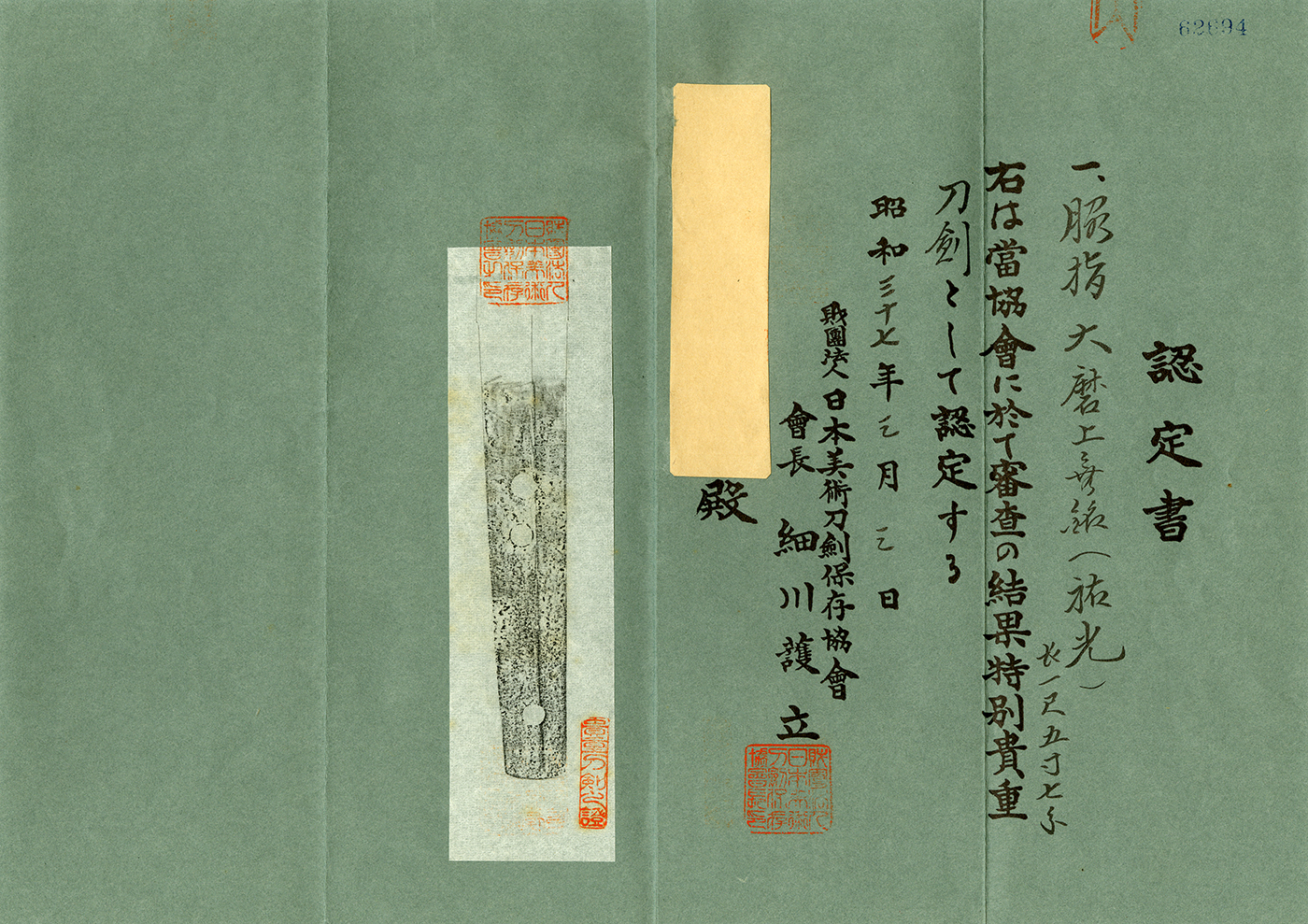Wakizashi: Mumei attributed as Sukemitsu
2017/01/09
Wakizashi in Shirasaya and Koshirae. (NBTHK Hozon paper) (NBTHK Tokubetsu Kicho Paper on each blade and Koshirae)
Signature : Mumei (unsigned) attributed as Sukemitsu.
Mid Koto : Chujo saku: Ryo Wazamono cutting test ranking : Bizen
(We divide 4 sections for each sword as Saijo saku, Jojo saku,
Jo saku and regular saku)
This sword belongs to Jo saku ranking.
The blade is polished
Habaki : Gold foiled double Habaki.
Blade length : 45.6 cm or 17.9 inches.
Sori : 1.2 cm or 0.47 inches.
Mekugi : 3
Width at the Hamachi : 2.55 cm or 1.00 inches.
Width at the Kissaki : 2.01 cm or 0.79 inches.
Kasane : 0.64 cm or 0.25 inches.
Era : Early Muromachi Period around Buan era (1444~1449)
Shape : Osuriage Mumei with Shinogi-Dukuri style.
Jitetsu : Koitame mixed with with Mokume-hada well grained with Jinie attached. Jigane is so clear and Bo-Utsuri appear on surface, which is typical Bizen sword at that period.
Shinogi Jigane : Itame-hada and Masa-Nagare.
Hamon : Konie-Deki with Choji midare Hamon. Boshi turns gorgeous Midarekomi style.
Special feature : Sukemitsu is told as father of Katsumitsu and Munemitsu. During early Muromachi period, Morimitsu and Sukemitsu were the two top of Bizen swords smiths. And after they retired, the age of Sukemitsu arrive.
This piece is Osuriage Mumei with nice Utsuri appear in Jigane and Choji -midare Hamon.
Balance of the size benefits for enjoy looking Jigane and Hamon easily.
Koshirae:
Tsuba : Japanese tea utensils are curved on round iron Tsuba with gold color.
Saya: Kairagi Saya (using ray shagreen)
Fuchikashira : Vine curved on Shakudo Nanakoji plate and inlaid with copper and gold.
Menuki : Shishi dogs are curved on gold color plate (or can be gold plate).
NBTHK Hozon paper
NBTHK Tokubetsu Kicho paper
NBTHK Tokubetsu Kicho paper (for Koshirae)
Aoi Art estimation paper : whole Oshigata.






